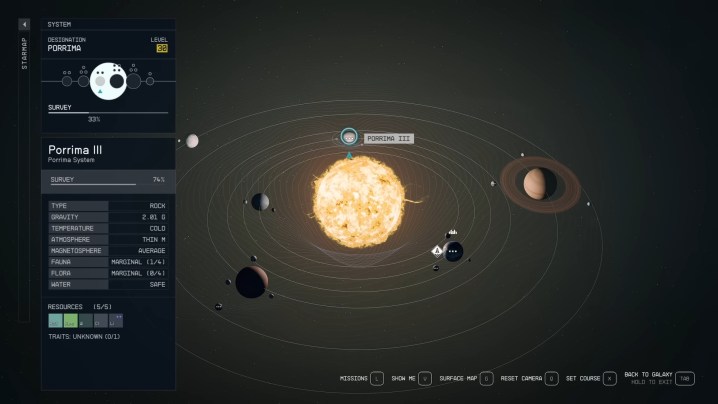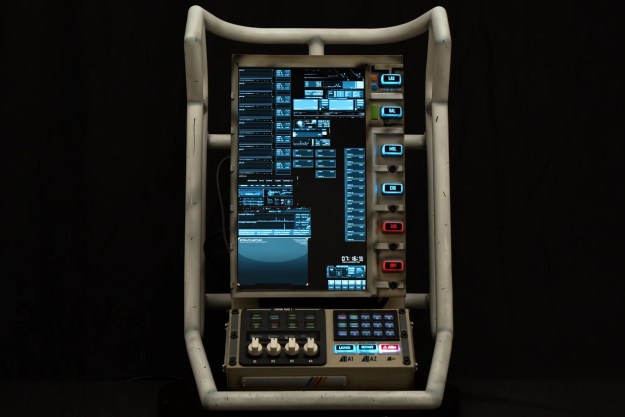Imagine leaving a bad review on Steam only to log on one day and find that the creators of that game had responded. That’s exactly what’s been happening to Starfield players as of late. Currently saddled with a Mixed status derived from over 80,000 user reviews, Bethesda has gone into damage control mode to respond to its harshest critics. Reviews that call the game boring have been met with direct responses as the publisher explains that perhaps that’s the point.
“Some of Starfield’s planets are meant to be empty by design — but that’s not boring,” one especially bold reply from Bethesda reads.
As you might expect, responses like that aren’t going over too well with gamers. It’s led to a minor social media scandal as players accuse Bethesda of scolding people who just don’t get its game. It’s a fair reaction to an unorthodox practice, but the knee-jerk cynicism is burying something potentially valuable. Bethesda is offering players a level of transparency that we usually have to pry out of massive gaming companies. Whether or not you agree with its reasoning is beside the point because we’re getting a rare glimpse at artistic intent that can help us better understand what works — and doesn’t — about one of the year’s biggest games.
Clapping back
In the tight-lipped world of video game PR, it can be difficult to get deep breakdowns from developers at the highest levels of the industry. You might get a few loose interviews here and there, but you’ll be hard-pressed to find Game Freak explaining why Pokémon Scarlet and Violet looks the way it does. When there’s no transparency between developers and players, it’s easy for the latter to assume that the former are oblivious to problems in their games. The reality is that, like any form of art, there’s intent behind every decision.
Bethesda’s long responses to Starfield user reviews have begun to clarify some things that strike players as obvious flaws. For instance, one major critique of the game since launch has been its glut of loading screens. Space travel never feels fluid because players have to hop out of multiple loading screens to get to a planet. Bethesda chimed in on one review to explain why the game is constructed that way.
“While there may be loading screens in-between fast traveling, just consider the amount of data for the expansive gameplay that is procedurally generated to load flawlessly in under three seconds,” a reply from Bethesda reads. “We believe that shortcoming will not hinder our players from getting lost in the world we created.”
The explanation is dressed up in careful PR language aiming to protect the game’s reputation, but the actual explanation is sound. Bethesda wanted to deliver massive worlds and a wealth of gameplay systems with Starfield. In order to achieve that, a concession had to be made. It’s not a fun answer, but it is a practical one that begins to reveal why Starfield has certain limitations.
What’s missed when players claim that Bethesda is trying to do damage control is that its comments are not “be-all and end-all” traps designed to make reviewers look dumb. Rather, they provide transparency that gives confused players a new lens with which to see the game. And that lens isn’t inherently rose-colored. Take the most eyebrow-raising comment of the bunch. In response to one review criticizing Starfield’s empty planets, Bethesda drops some insight into why exploration works the way it does.
“When the astronauts went to the moon, there was nothing there. They certainly weren’t bored,” Bethesda wrote on November 2. “The intention of Starfield’s exploration is to evoke a feeling of smallness in players and make you feel overwhelmed. You can continue to explore and find worlds that do have resources you need or hidden outposts to look through.”

Whether or not Bethesda’s thinking is “right” is irrelevant; the more impactful point is that it’s offering clear reasoning for why exploration works the way it does. From there, it’s up to players to decide whether or not that idea makes the game work for them — and it doesn’t have to. In reading the comment, I came out with both a newfound appreciation for what Bethesda wanted to achieve and firmer words to understand why parts of it simply don’t work for me.
A big part of that comes to what I view as mismatched context. Yes, astronauts weren’t bored on the moon, because real-life humans had never seen anything like it at the time. It was a foreign adventure for the entire world. Exploring outer space in a video game isn’t a comparable experience. I’ve explored alien planets in No Man’s Sky, experienced zero gravity in Dead Space, and mined my fair share of metals in countless games. In order to replicate the pioneering vision of the moon landing, Bethesda needed to provide me with a similarly groundbreaking experience that I’d never seen before. Starfield, with its plodding design and technical limitations that make its universe feel small, isn’t it.
Critical conversation
I may never have crystallized that precise problem I have with Starfield had I not read some of Bethesda’s comments. And while one could read that as the counter-review strategy backfiring, it reminds us of something that’s always easy to forget: art is a conversation. Works like Starfield aren’t meant to be consumed in a vacuum. They’re meant to be discussed among interested players who are eager to dissect games from every angle. Every piece of commentary is part of that collective dialogue: casual chats with friends, user reviews, tweets, and, yes, even developer comments.
That’s a philosophy that guides our writing at Digital Trends, too. When we review a game, we never intend for it to be the one correct take. It’s merely a conversation starter. The hope is always that our readers springboard off of that review to help them better understand their own criticisms, whether they agree or disagree with us. Do you feel we were too harsh on Sonic Frontiers? Great! Our hope is that we’ve outlined our problems in a clear enough manner that you’re able to better pinpoint your own feelings. Maybe you’ll find that you feel the opposite. Maybe you’ll agree, but take our arguments one step further. That’s the kind of conversation we hope to help build, and developer insights like this are a critical piece of that dialogue.

When I think about the reaction to Bethesda’s strategy, a similar moment that informs how I think about games today comes to mind. Shortly after Space Warlord Organ Trading Simulator launched in 2021, a PC player took to Steam to criticize the oddball game’s UI and organ economy. Developer Strange Scaffold would respond to the comment with a long explanation outlining the exact intent behind every single problem outlined. The comment makes an impassioned defense for the “friction” present in the game that’s irritating for a reason.
“The fog in Silent Hill 2. The increasingly esoteric and fiddly control scheme in the original Metal Gear Solid trilogy. The terrifyingly stringent theater of pain seen in Pathologic,” Strange Scaffold wrote. “Borderline unfair scenarios, strangely rigid systems, odd concessions, and irritating shortcomings in video games across the history of the medium don’t just result in the vibrant gaming environment we have now — their inclusion is necessary to impact a player on any level that goes beyond making lights appear on a screen.”
It’s a fascinating perspective that makes it clear that just about every annoyance in the game has intent behind it. That helped me better understand a game I was personally struggling to enjoy at the time, inviting me to think more critically about what the art communicates. And that conversation was a two-way street too. Strange Scaffold concedes a few points in the thread too, noting that it planned to add more options that would cut back some unintended friction. It was a productive moment for both developers looking for feedback and players trying to find the game’s grooves.
I’m reading Bethesda’s comments in the same way, as I learn why Starfield is structured the way it is. It doesn’t make me like it any more, but it does give me a bit more to chew on as I try to pin down why its exploration doesn’t click with me. You can’t get to the heart of a problem if you never get a chance to pick a studio’s brain. Now here I am, adding another piece on top of that conversation as I break down where Bethesda’s intent falls flat for me. Perhaps you’ll also unlock something you haven’t been able to put your finger on by reading this and share it with your own circles.
That’s the nature of criticism; you don’t need to write formal reviews to be part of that conversation.
Editors' Recommendations
- Bethesda turns Skyrim into a mod platform with new Creations feature
- A field-of-view slider headlines Starfield’s latest update
- You don’t need an Xbox Series X to play Starfield. Here’s how
- Starfield gets the most mileage out of an overused sci-fi trend
- Starfield is a success. What does that mean for the future of Xbox?




